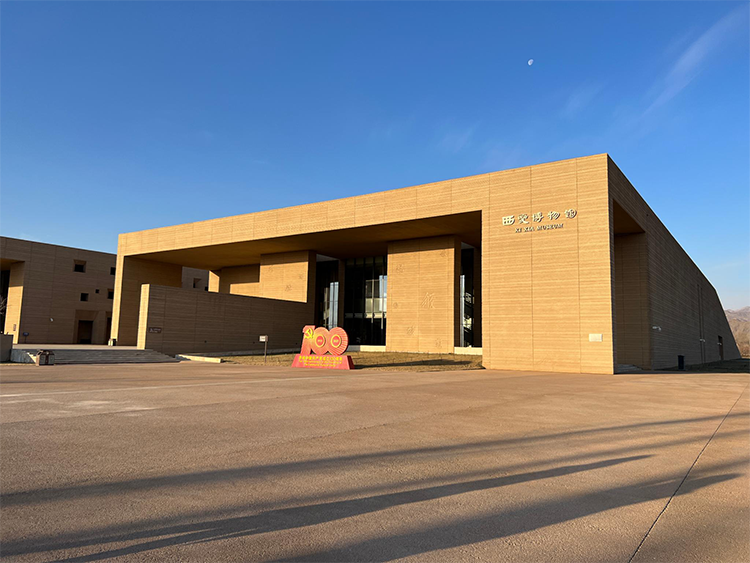Western Xia Tombs: A Visitor’s Guide to China’s Eastern Pyramids
In the vast northwest of China, west of Yinchuan city, a mysterious and monumental burial complex rises from the steppe—the Xixia Tombs. Often called the “Eastern Pyramids,” these royal mausoleums date from the 11th to 13th centuries and cover roughly 50 square kilometers. Nine imperial tombs and more than 250 attendant burials survive today. Walking among them feels like stepping through a thousand years of history into the world of the Tangut-led Western Xia dynasty.
1. Historical origins: The rise and fall of the Western Xia dynasty
The Xixia Tombs were begun in 1038 as the burial grounds for Li Yuanhao, the founding emperor of the Western Xia, and his successors. Founded by the Tangut people, Western Xia once shared power with the Song, Liao and Jin dynasties and controlled a key section of the Silk Road. The Mongol conquest eventually brought the dynasty to an end, leaving these silent tombs as the main witnesses of its former glory.
The cemetery layout blends Tangut traditions with imperial Chinese funerary design: grand ceremonial axes and scaled terraces echo Han–Tang practices while retaining distinct ethnic elements. No. 3 Tomb—often attributed to Li Yuanhao—is the best-preserved. Visitors can still make out terrace platforms, stele pavilions and the so-called “moon city,” offering valuable insight into Western Xia architectural and funerary customs.
2. Architectural character: The unique charm of the Eastern pyramids
What most captures the imagination are the earthen, tower-like burial mounds: compacted-earth platforms shaped like pyramids but bearing the solemn formality of Chinese imperial tombs. Weathered by millennia of wind and sand, they stand resolute and, at sunset, glow a golden-red against the Helan Mountains—earning the site the nickname “the golden wonder beneath Helan.”
Stone carvings along the spirit ways are equally striking: guardian statues, stelae and powerful warrior figures attest to the high skill of Western Xia artisans. Gilded bronze oxen and stone warrior sculptures unearthed here are displayed at the Ningxia Museum, offering a tangible window into Western Xia art and ritual.

3. Cultural experiences: Rediscovering lost Western Xia culture
The Xixia Tombs appeal both to archaeology enthusiasts and casual travelers. The onsite Xixia Museum and visitor center use artifacts, murals and multimedia exhibits to bring Western Xia society, religion and craftsmanship to life.
Recommended experiences:
– 3D holographic projection: an immersive reconstruction of how the tombs were built
– Tangut script interaction: try writing the mysterious Western Xia script
– Archaeology simulation: a hands-on excavation activity, ideal for families and children
4. Best times to visit and photography tips
All seasons offer unique views, but spring and autumn (April–May, September–October) provide the most pleasant weather and are best for visiting. Summers can be hot—plan mornings or evenings—while winter reveals a stark, snow-covered beauty after a snowfall.

Photography must-dos:
– No. 3 Tomb panorama: climb the viewing platform for sweeping views of the tombs framed by the Helan Range
– Golden-hour silhouettes: capture the tombs’ warm tones at dusk for dramatic light and shadow
– Spirit-way details: use a telephoto lens to record the textures and carved patterns on stelae and statues
5. Practical information and itinerary suggestions
Address: Western slope of the Helan Mountains, Xixia District, Yinchuan, Ningxia
Opening hours: 8:00–18:30 (peak season April–October); 8:30–17:30 (off-season November–March)
Admission: CNY 75 (includes access to the Xixia Museum and shuttle to No. 3 Tomb)
Transport:
– Bus: Yinchuan City’s Tourist Line 1 (游1路) goes directly to the site
– Car: navigate to “Xixia Mausoleum National Archaeological Park”; parking is free
– Taxi/ride-hailing: about 30 minutes from central Yinchuan; approximate fare CNY 50
Suggested visit length: 2–3 hours; half a day if you plan an extended museum visit
Combination ideas: pair with the Helan Mountain petroglyphs or Zhenbeibu Film Studio for a full-day itinerary
6. Local tips
– Avoid midday in summer: the sun is strong—visit in the cooler morning or late afternoon
– Protect against wind and sun: the northwest is windy—bring a hat and sunglasses
– Respect the site: do not climb on the terraces or touch the stone carvings

Conclusion: A dialogue across a thousand years
The Xixia Tombs are more than ruins; they are a three-dimensional history book that records the rise and decline of a vanished empire. Standing beneath the Helan Mountains before these silent “pyramids,” you can almost hear the echoes of cavalry, the strike of artisans’ hammers, and the sighs of emperors. If you love history and culture, the Xixia Tombs deserve a spot on your Ningxia travel itinerary.


